
The Bangkok property market has seen a significant recovery from the effects of the floods, according to CBRE Thailand a leading international real estate service provider. Even the worst hit areas such as low rise housing, retail and industrial in areas that were flooded have seen resumed activity. In the flooded areas, all retail centres have reopened, there were new housing sales and the majority of factories have reopened or are in the process of reopening.
Residential Market:
In the single detached house and townhouse market, while developers are concentrating most new launches in areas that were not flooded, CBRE is also seeing new sales resuming in areas that were flooded, particularly for the low to middle-end market, but the high-end housing market is slowly recovering.
“We believe the desire of purchasers to own a house or townhouse close to future mass transit stations in the suburbs have continued as fears of a repeat flood are now alleviated. Demand for single-detached houses and townhouses will increase but this will be driven by affordability and the attractiveness of the product and location,” said Aliwassa Pathnadabutr, managing director of CBRE Thailand.
The prices of condominiums are rising due to higher land costs and construction costs. CBRE believes that for a fixed budget, the majority of the family market will consider townhouses in a good location several kilometres away from a mass transit station in the suburb rather than a one-bedroom condominium in the city which is at a similar price point. Nevertheless, there will be continued demand for small condominiums from singles, couples and weekday occupation by children attending central city schools and second home use.
LPN, the leading entry-level condominium developer has branched out into townhouse developments with two new projects including Lumpini Town Residence which offers 190 – 200 sq.m. three-storey townhouses on an 88 – 188 sq.m. plot priced at THB8.79 million (US$280,070) and only 200 metres from the MRT Ladprao station. LPN has also launched Lumpini Town Place offering three-storey townhouses on 80 – 100 sq.m. plots at Ratchayothin-Sena, located 3.6 kilometres from the nearest MRT station.
In the luxury condominium market, demand is driven primarily by end-users and partly by buy-to-let investors who purchase with the potential for own use in the future. Record prices have been achieved for condominiums in the best locations and best-quality recently-completed projects. CBRE has seen achieved sales prices in the region of THB160,000 to THB200,000 (US$5,098 to US$6,373) per sq.m. for individual units in completed luxury projects such as Q Langsuan, Saladaeng Residences, Athenee Residence and The Park Chidlom. The majority of the projects achieving this price level is located within the Lumpini area, one of Bangkok’s most prestigious address and expensive locations. CBRE believes condominium prices in the Sukhumvit area are also gradually moving up in line. However, prices in projects that are more than ten years old remain flat mainly because common areas have not been renovated which means they are significantly less attractive than new projects.
In the middle and entry-level markets, condominium prices have adjusted upwards, but to a lesser extent than the luxury market. There continues to be new project launches although the absorption rate is slower, compared to two years ago where many projects tended to sell out at launch. The top public listed developers dominate this segment of the market.
Condominium living is becoming more widely adopted and there is still potential demand particularly in densely populated areas where there has been limited development. Developers will face the challenges of identifying new opportunities in new locations as well as to sell out poorly performing projects before they are completed. The competition will remain fierce with a tendency to quickly over supply in a particular location.
Office Market:
Demand continued to improve in the office market. The overall vacancy rate was 13.86 per cent compared to 14.13 per cent in Q4 2011.
The Grade-A CBD vacancy rate was 18.33 per cent, down from 20.51 per cent in Q4 2011. The higher vacancy rate for the Grade-A segment compared to the overall office market can be explained by the completion of two new Grade-A buildings – Park Ventures Ecoplex and Sathorn Square. Both buildings were completed last year with tenants just beginning to take occupation. The vacancy rates in both buildings will fall as tenants move in to take physical occupation. The majority of other Grade-A office buildings within the CBD are less than 10 per cent vacant.
Tenants looking for Grade-A CBD offices actually have a surprisingly limited choice, particularly larger space users. CBRE expects that rents for the preferred buildings will continue to rise as there is very limited new supply before 2014.
Retail Market:
In the retail sector, all shopping centres closed during the floods have reopened. Major shopping centres benefited from the V-shaped recovery in the economy. The retail sector has continued expanding both within the downtown and in suburban locations, with focus on large-scale retail such as Terminal 21 and Mega Bangna. The retail industry is beginning to evolve with projects becoming more focused on a unique concept and the industry being more lifestyle driven, catering to the needs of each target segment.
Small-scale first-time developers continue to build community malls. CBRE believes that not all of these will succeed, in many cases rental rates and occupancy will be lower than expected given a limited catchment area, therefore threatening the longer term viability of these projects.
Industrial Market:
In the industrial sector, CBRE is seeing factories reopen on the seven estates and parks that were affected by the floods. There have not been mass factory closures in these areas. Future expansion of existing companies and new investment is focused on the Eastern Seaboard and Saraburi, Nakhon Ratchasima areas.
CBRE expects that industrial estate developers could see another record year for industrial land plot sales and their challenge will be to supply enough plots where the infrastructure has been completed and all necessary permits are in place.
Hotel & Serviced Apartment Markets:
In the hospitality sector, there continues to be strong tourist arrivals. However, the total hotel supply continues to increase in Bangkok, putting pressure on occupancy and rates.
CBRE expects that hotel room supply will increase by 28 per cent in Bangkok by 2014. Some hotel developers may face some difficulty in adhering to their loan repayments unless the cash flow is coming from another business line. Banks may start to tighten their lending criteria to the hotel sector which will restrict the amount of new supply that is being planned but it is not yet being built.
The serviced apartment sector performed better with occupancy and rates rising with the mix between long and daily rate guests providing more stability. Limited future supply of serviced apartments has improved prospects for the serviced apartment sector.
In the single detached house and townhouse market, while developers are concentrating most new launches in areas that were not flooded, CBRE is also seeing new sales resuming in areas that were flooded, particularly for the low to middle-end market, but the high-end housing market is slowly recovering.
“We believe the desire of purchasers to own a house or townhouse close to future mass transit stations in the suburbs have continued as fears of a repeat flood are now alleviated. Demand for single-detached houses and townhouses will increase but this will be driven by affordability and the attractiveness of the product and location,” said Aliwassa Pathnadabutr, managing director of CBRE Thailand.
The prices of condominiums are rising due to higher land costs and construction costs. CBRE believes that for a fixed budget, the majority of the family market will consider townhouses in a good location several kilometres away from a mass transit station in the suburb rather than a one-bedroom condominium in the city which is at a similar price point. Nevertheless, there will be continued demand for small condominiums from singles, couples and weekday occupation by children attending central city schools and second home use.
LPN, the leading entry-level condominium developer has branched out into townhouse developments with two new projects including Lumpini Town Residence which offers 190 – 200 sq.m. three-storey townhouses on an 88 – 188 sq.m. plot priced at THB8.79 million (US$280,070) and only 200 metres from the MRT Ladprao station. LPN has also launched Lumpini Town Place offering three-storey townhouses on 80 – 100 sq.m. plots at Ratchayothin-Sena, located 3.6 kilometres from the nearest MRT station.
In the luxury condominium market, demand is driven primarily by end-users and partly by buy-to-let investors who purchase with the potential for own use in the future. Record prices have been achieved for condominiums in the best locations and best-quality recently-completed projects. CBRE has seen achieved sales prices in the region of THB160,000 to THB200,000 (US$5,098 to US$6,373) per sq.m. for individual units in completed luxury projects such as Q Langsuan, Saladaeng Residences, Athenee Residence and The Park Chidlom. The majority of the projects achieving this price level is located within the Lumpini area, one of Bangkok’s most prestigious address and expensive locations. CBRE believes condominium prices in the Sukhumvit area are also gradually moving up in line. However, prices in projects that are more than ten years old remain flat mainly because common areas have not been renovated which means they are significantly less attractive than new projects.
In the middle and entry-level markets, condominium prices have adjusted upwards, but to a lesser extent than the luxury market. There continues to be new project launches although the absorption rate is slower, compared to two years ago where many projects tended to sell out at launch. The top public listed developers dominate this segment of the market.
Condominium living is becoming more widely adopted and there is still potential demand particularly in densely populated areas where there has been limited development. Developers will face the challenges of identifying new opportunities in new locations as well as to sell out poorly performing projects before they are completed. The competition will remain fierce with a tendency to quickly over supply in a particular location.
Office Market:
Demand continued to improve in the office market. The overall vacancy rate was 13.86 per cent compared to 14.13 per cent in Q4 2011.
The Grade-A CBD vacancy rate was 18.33 per cent, down from 20.51 per cent in Q4 2011. The higher vacancy rate for the Grade-A segment compared to the overall office market can be explained by the completion of two new Grade-A buildings – Park Ventures Ecoplex and Sathorn Square. Both buildings were completed last year with tenants just beginning to take occupation. The vacancy rates in both buildings will fall as tenants move in to take physical occupation. The majority of other Grade-A office buildings within the CBD are less than 10 per cent vacant.
Tenants looking for Grade-A CBD offices actually have a surprisingly limited choice, particularly larger space users. CBRE expects that rents for the preferred buildings will continue to rise as there is very limited new supply before 2014.
Retail Market:
In the retail sector, all shopping centres closed during the floods have reopened. Major shopping centres benefited from the V-shaped recovery in the economy. The retail sector has continued expanding both within the downtown and in suburban locations, with focus on large-scale retail such as Terminal 21 and Mega Bangna. The retail industry is beginning to evolve with projects becoming more focused on a unique concept and the industry being more lifestyle driven, catering to the needs of each target segment.
Small-scale first-time developers continue to build community malls. CBRE believes that not all of these will succeed, in many cases rental rates and occupancy will be lower than expected given a limited catchment area, therefore threatening the longer term viability of these projects.
Industrial Market:
In the industrial sector, CBRE is seeing factories reopen on the seven estates and parks that were affected by the floods. There have not been mass factory closures in these areas. Future expansion of existing companies and new investment is focused on the Eastern Seaboard and Saraburi, Nakhon Ratchasima areas.
CBRE expects that industrial estate developers could see another record year for industrial land plot sales and their challenge will be to supply enough plots where the infrastructure has been completed and all necessary permits are in place.
Hotel & Serviced Apartment Markets:
In the hospitality sector, there continues to be strong tourist arrivals. However, the total hotel supply continues to increase in Bangkok, putting pressure on occupancy and rates.
CBRE expects that hotel room supply will increase by 28 per cent in Bangkok by 2014. Some hotel developers may face some difficulty in adhering to their loan repayments unless the cash flow is coming from another business line. Banks may start to tighten their lending criteria to the hotel sector which will restrict the amount of new supply that is being planned but it is not yet being built.
The serviced apartment sector performed better with occupancy and rates rising with the mix between long and daily rate guests providing more stability. Limited future supply of serviced apartments has improved prospects for the serviced apartment sector.



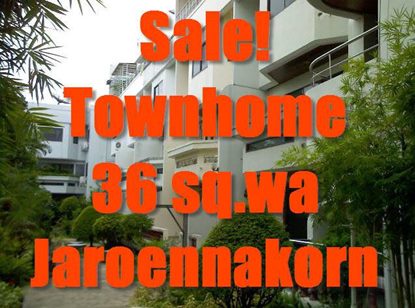

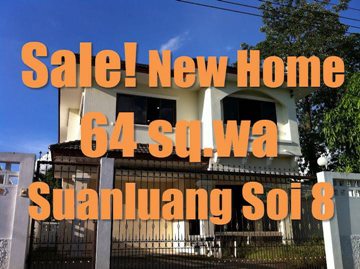
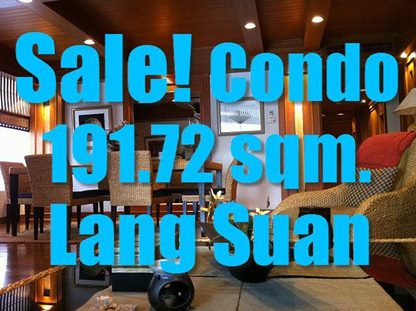
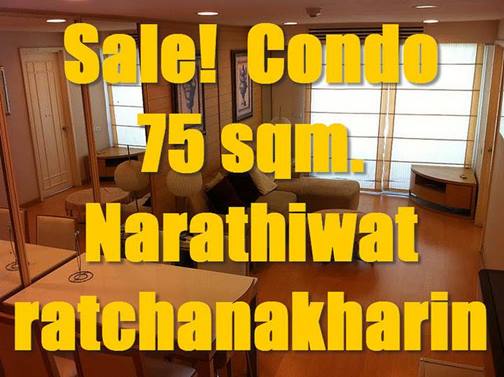

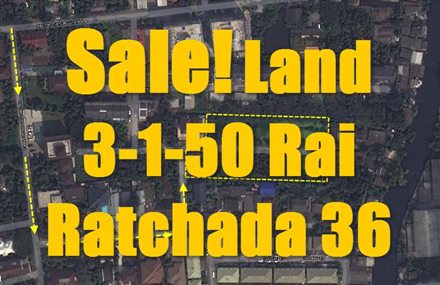


 RSS Feed
RSS Feed
